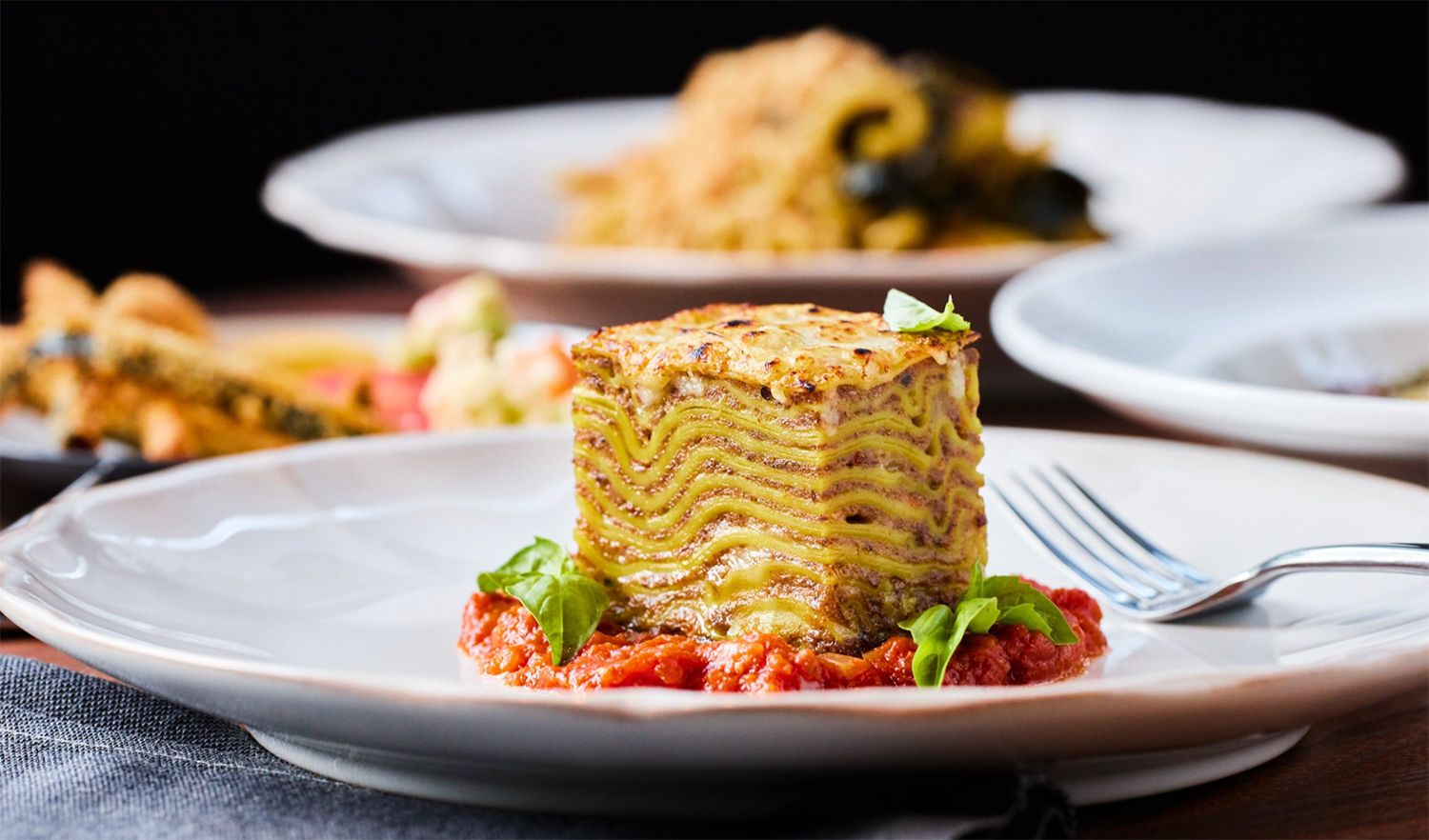Newly made over with a new concept, Acquerello's six-month-old sister restaurant in Polk Gulch is a winner, offering Acquerello-level pasta and excellent bar snacks alongside cocktails, great wine, and a huge selection of amaro.
San Francisco has never been hurting for good pasta, and our wealth and breadth of options mean there are multiple echelons and regional styles of pasta experiences to explore. The New York Times' Mark Bittman noted a decade ago that San Francisco's historic Italian-immigrant community gave way to deep ties with Italy — and it's no mistake that what became known as "California Cuisine" is essentially "Italian-dominated Mediterranean" cuisine, as Bittman puts it. And thus he argued that San Francisco may be the "world’s best city for regional Italian food" — like a city-sized food court where you can sample from many regions of Italy in the same day, something you can't even really do in Italy.
Bittman noted the devotion to authentic Piemontese cuisine at Perbacco, La Ciccia's terrific Sardinian food, and the Neapolitan and Roman dishes at Delfina and Delfina Pizzeria. But there are many other examples of where SF restaurants have gone deep into regions of Italy, including North Beach's Da Flora (Venice), SPQR (Milan and other regions), Montesacro Pinseria (Rome), Locanda (RIP, Rome), Cotogna (Emilia-Romagna, Bologna and others), A16 (Campania, Puglia, Naples), Caffe Sport (Sicily), Liguria Bakery, and the former Farina (Liguria).
Acquerello — which earned longtime chef Suzette Gresham two Michelin stars — has always been more about luxury in its takes on Northern Italian cuisine, and sort of like Quince will offer unique, hand-crafted pastas in rich, nuanced sauces to complement other high-end courses.
At Sorella (which means "sister" in Italian) on Polk Street, the team, led by Chef de Cuisine Denise St. Onge — with help from Acquerello Chef de Cuisine Seth Turiansky, to whom St. Onge is also married — has pivoted away from the international amalgam that was 1760 (the space's previous incarnation). Perhaps wisely, they've doubled down on Italy, offering up a menu of small plates, divine pastas, and a handful of larger-format entrees, expanding the width of the bar area by a few feet to accommodate more of a standing crowd on busy weeknights and weekends.

There's an emphasis on Italy's ritualistic aperitivo culture, with a selection of cicchetti (like tapas or bar snacks) available only at the bar — and cicchetti themselves are a product of Venetian bar culture, served at bacari or wine bars.
The cicchetti options at Sorella include cacio-e-pepe-dusted potato chips, sausage-stuffed fried olives, some excellent anchovy toasts, and oysters of the day topped with a bright sea-bean and finger-lime mignonette. And there's a Calabrese-sausage-stuffed chicken wing inspired by Thai-style "angel wings," which Eater just highlighted this week. The main restaurant menu also includes small plates like veal meatballs, warm parmesan budino, and spicy grilled calamari served with zucchini and a prawn and 'nduja sausage.
All of these make for a fun cocktail experience if that's all you're there for, and the bartenders are well versed in the broad selection of Italian spirits, including Italian-made gins and many, many amari. The cocktail menu includes an amaro highball, as well as a terrific amaro sour, frothed up with rye, Averna, lemon, sage syrup, creme de violette, and bitters.
But damn, the pasta. Most of us can't often swing the potentially thousand-dollar bill that comes with dinner at Acquerello. Luckily, Sorella is now serving pasta that's good and interesting enough to be featured as a course at its fancier, older sister restaurant — and dare I say more unique and intensely flavorful than most any pasta you can find in San Francisco.

The menu will change with the seasons, but spring selections include a heavenly spring pea cappellacci — a stuffed, hat-shaped pasta traditionally from Ferrara in the Emilia-Romagna region and traditionally filled with pumpkin — stuffed with pea puree and served here with miso, pecorino fiore sardo, dill, and poppy seeds. The squid-ink linguini is served in a rich, spicy sauce with lobster and tomato confit. Stuffed, perfectly delicate agnoletti come stuffed with short-rib and are served in a buttery sauce with morel mushrooms, fava beans, and black garlic. And fiorentini — another not-often seen shape, sort of like a torn-open and twisted rigatoni — is served with a saffron and berbere-spiced lamb bolognese, with pepper soffritto and ricotta salata on top.
Hopefully one dish that will remain, because it is arguably the star of the show, is the dry-aged beef timballo — a lasagna-like, many-layered creation with an umami-rich meat mixture interlaced with thin sheets of pasta, topped with comté cheese, and served atop a rustic tomato sauce. If it weren't so rich, I'd say I could eat three of these in one sitting.

There are also larger dishes like lamb osso bucco and a grilled pork chop, but those are only for dining in a group, or if someone is doing Paleo.
I don't believe there's another restaurant in the city where you could have a drop-in pasta experience of this caliber, sitting at the bar with a delicious Italian red or an aperitivo. Most other options out there are either more basic, pasta-wise, or a lot less casual in terms of the atmosphere and what's expected of you.
So, for that reason alone, we can be grateful for this new restaurant to come our way, giving San Francisco another angle on Italy that we didn't know it needed.
Sorella - 1760 Polk Street at Washington - Open Wednesday to Sunday, 5:30 p.m. to 10 p.m.
For budgetary reasons, SFist editors and contributors occasionally accept complimentary meals from restaurants and their publicists. More often, we pay out of pocket for our meals. While we mostly refrain from writing formal reviews, we make every effort when giving opinions about restaurants to be objective, and to focus more on food and ambiance than service in order to make up for any possible bias.

